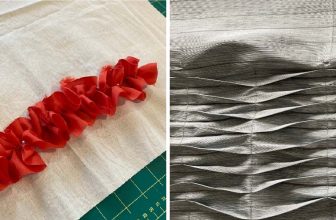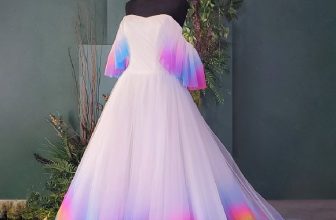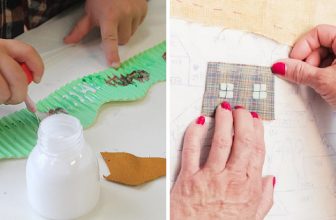How to Shirr Fabric
Are you ready to learn a unique and creative way of making fabric look amazing? Maybe you’ve heard of “shirring” before but never tried it. Well, this is the blog post for you! Today we are walking through how to shirr fabric, which can instantly give any material a softer and more delicate feeling.
Our step-by-step tutorial makes shirring accessible for everyone, regardless of their level of sewing experience or skill set. Get ready to add something new and exciting to your repertoire with this simple technique!
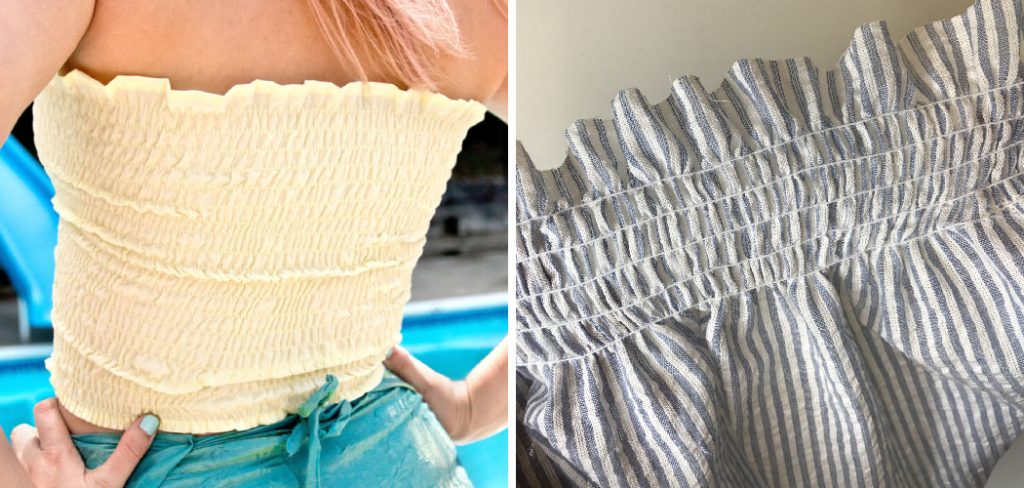
Shirring fabric is one of the oldest techniques for gathering fabric and adding texture to a garment or accessory. Originating in ancient Egypt, it continues to be used today, bringing an ever-elegant touch to your favorite clothing pieces!
Creating shirred fabric can seem intimidating at first but with just a few simple steps you’ll quickly realize that there’s nothing scary about this classic crafting technique. Here we’ll explore how to shirr fabric. Read on for all the tips and tricks necessary for perfect shirred fabric every time!
Why May You Want to Shirr Fabric?
1 . To Create Texture
Shirring is a great way to add texture and dimension to your garment. Shirred fabric looks beautiful when used in pleats, ruffles, and smocking. It can also be used to create interesting geometric patterns that can really add something special to an otherwise plain piece of clothing.
2 . To Add Volume
Shirred fabric is a great way to add volume and body to a garment. This is especially useful for creating fuller skirts, tops, and dresses. It can also be used to create fitted garments that still have some extra dimension.
3 . To Add Interest
Shirred fabric will always catch the eye of a passerby because it has an interesting pattern that stands out. It can be used to create a subtle statement or make a bold fashion statement depending on how it is incorporated into the design.
4 . To Make Adjustments
Shirred fabric is also great for making adjustments on clothes that fit improperly. For example, if you’re having trouble getting pants to fit your waist properly, shirring can help to adjust the waistband so that it fits better.
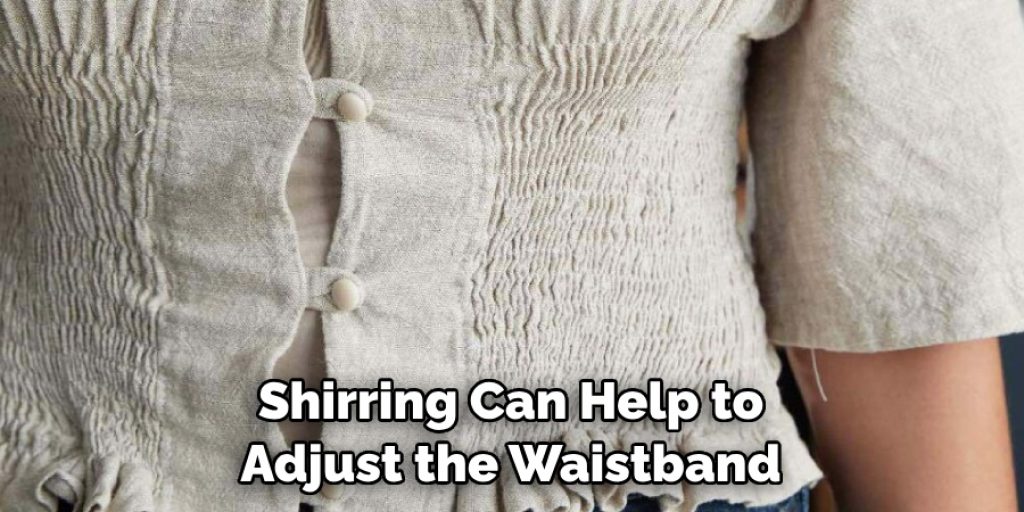
5 . To Add Color and Pattern
Shirred fabric is also a great way to add color and pattern to an outfit. It can be used to add subtle pops of color or intricate patterns depending on how you choose to use it in your design.
How to Shirr Fabric in 5 Easy Steps
Step 1: Gather All The Tools
The very first step is to make sure you have all the materials needed for shirring, which includes a flexible tape measure, fabric scissors, pins, thread, sewing machine and an iron.
Step 2: Measure & Cut The Fabric
Measure your project area and cut the fabric accordingly. Make sure to leave an extra inch or two for ease when attaching it to your item.
Step 3: Pin & Sew The Shirring Threads
Starting from the top of your fabric, insert pins in a row with each pin equidistant to the others. Then sew multiple lines of thread in between these pins and ensure that all stitches are sown in the same direction.
Step 4: Attach Fabric To Project
Attach your shirred fabric to the project item and pin in place. Adjust as needed to ensure a snug fit. Also make sure that the shirring threads are in between the two layers of fabric.
Step 5: Iron & Enjoy!
Finally, iron on a low setting to set the stitches and ensure that your item looks perfect. Once finished, enjoy your shirred project!
Shirring is an easy and great way to add texture and detail to any project. With just a few simple steps, you can create beautiful and unique fabric projects. So don’t hesitate to try shirring today!
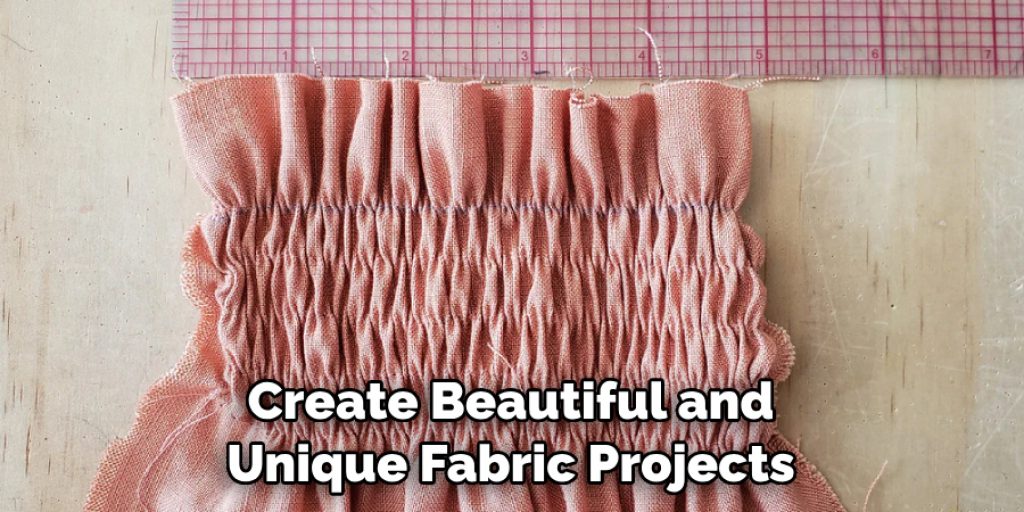
Some Other Tips to Shirr Fabric
1 . Do Not Overstretch
When shirring, make sure not to overstretch the fabric as it may cause a distorted or lop-sided effect. Keep in mind that if your project requires stretching, do so gradually and evenly while sewing.
2 . Use The Right Thread Type & Color
For best results, use thread that is made of the same material as your fabric. This will ensure that the thread does not show through or cause damage to your project. Additionally, choose a color that is close in shade to your fabric for best results.
3 . Experiment With Different Patterns & Techniques
Shirring can be done in various ways depending on the look you’re going for. For a lacy effect, sew the shirring threads in a zig-zag pattern or in tight spirals. You can also experiment with different thread colors and textures to create unique looks!
These are just some of the tips that can help you get started with shirring fabric projects. With practice and experimentation, you’ll find that shirring is an easy, fun, and creative way to add detail and texture to your projects. So go ahead and give it a try!
Frequently Asked Questions
What Precautions Should Be Taken When Shirring Fabric?
When shirring fabric, it is important to take a few precautions. Firstly, you should always test your fabric on a scrap piece first to ensure that it will not be damaged by the process of shirring. Additionally, you want to make sure that the tension on your machine is set correctly so that the stitches do not pull too tightly on the fabric.
Lastly, always use a sharp needle and the proper size thread for your fabric to ensure that the stitches will last. With these precautions in mind, you can be sure that your fabric shirring project will turn out great!
What Fabrics Can I Shirr?
Most fabrics are suitable for shirring, except for very delicate fabrics. Generally speaking, the more stable the fabric is (i.e. less prone to stretching out of shape) the better it will be for shirring. Some commonly used fabrics include cotton, linen, silk and synthetic blends.
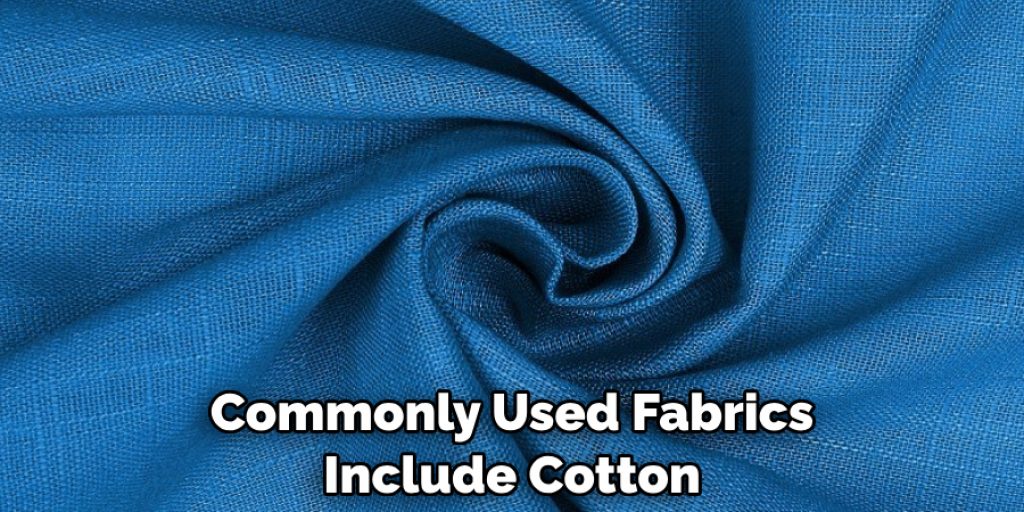
What Is The Best Thread To Use When Shirring Fabric?
When shirring fabric, the best thread to use is a 100% cotton thread. Cotton threads are strong and durable, making them ideal for shirring projects that need stitches that will last long-term. Additionally, they will not stretch or break easily when under tension from the shirring process.
Is Shirring Fabric Difficult?
Shirring fabric is easy to learn, but does require some practice. To make the process easier, it’s important to use a machine with adjustable tension settings and a sharp needle that is appropriate for your fabric type. Once you get the hang of it, shirring can be a fun and rewarding way to add texture and dimension to any fabric project!
What Are Some Creative Ways To Use Shirred Fabric?
Shirred fabric can be used in many creative ways. It can be used to add texture and volume to clothing, accessories or home decor pieces. You can also use it to make unique upholstery items such as pillows and ottomans. Shirred fabric is also a great way to embellish quilts or other fabric items. The possibilities are only limited by your imagination!
Can I Shirr Fabric by Hand?
Yes, it is possible to shrink fabric by hand. However, the process is much more time-consuming and difficult than using a machine. If you are planning to shirr fabric by hand, it’s important to remember to take extra care with the tension of your stitches. Too loose and the fabric won’t shrink properly, but too tight and the fabric may distort or rip.
What Are Some Tips for Successfully Shirring Fabric?
When shirring fabric, there are a few tips that can help ensure your project is successful. Firstly, make sure you are using the right type of thread and needle for your fabric. Secondly, always test your stitches on a scrap piece of fabric first. Lastly, ensure that your machine’s tension is set correctly so that the stitches won’t pull too hard on the fabric. With these tips in mind, you’ll be sure to have great success with shirring!
Can I Shirr Multiple Layers of Fabric At Once?
Yes, it is possible to shrink multiple layers of fabric at once. However, the tension settings may need to be adjusted in order to ensure that the stitches are not too tight on all of the layers. Additionally, thicker fabrics may require larger needles and heavier thread for successful shirring.
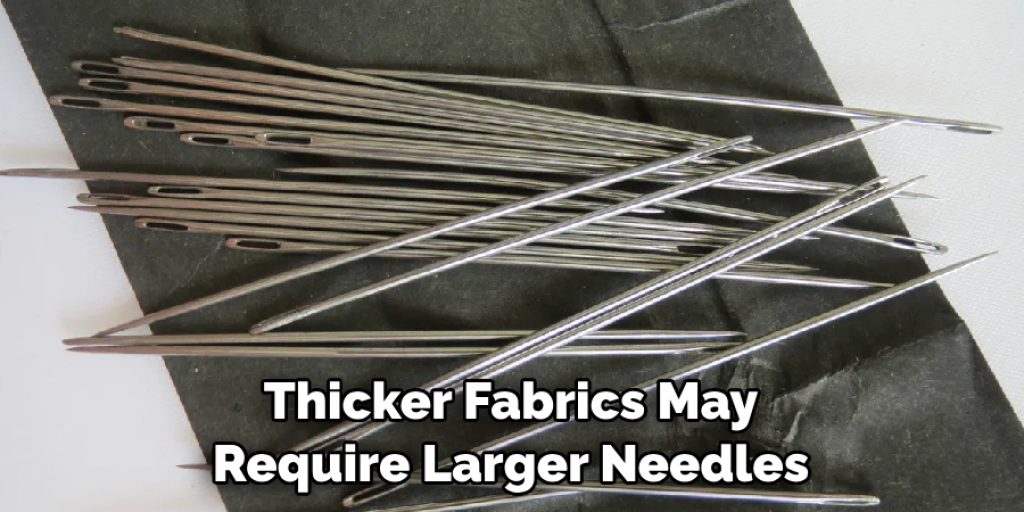
Conclusion
Shirring fabric is a fun and unique way to update a garment or add interesting detail to your look. With the knowledge of fabrics that work best for shirring, the right thread type and tension, plus various best practices to be aware of through the process, you’re now equipped with the basics of shirring!
Whether you’re just beginning to explore sewing techniques or have been experiencing them for years, take the time to craft something beautiful by learning how to shirr fabric today. Who knows — in no time at all, you could have transformed your wardrobe with simple yet unique creations from classic elastic-gathered garments.

